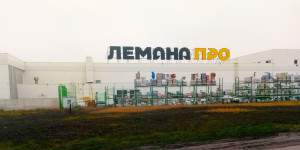Traditionally in Poland, simple renovation jobs such as minor repairs or the painting of walls are usually done by consumers themselves. However, more and more people are deciding to employ specialists for more labour-intensive activities. Despite the economic crisis, there is a growing trend towards hiring professionals such as architects or interior designers. Polish consumers are slowly moving away from the ‘do-it-yourself’ model towards a ‘do-it-for-me’ one. As reported by market researchers Euromonitor, a downturn in housing construction was observed in 2012. The reason for this was difficulties in accessing housing loans and the lack of any prospect of a rapid economic recovery. Shrinking purchasing power adversely affected the scale of renovation and interior design improvements. As obtaining loans became more difficult, repairs were mostly funded by consumers themselves. While the popularity of branded products grew, customers mainly looked for such products in lower-cost distribution channels such as the internet. In addition, they searched for price discounts in DIY outlets and negotiated prices in smaller specialty stores. Prices increased within most home improvement areas in 2012 – a development which helped to fuel value growth. Euromonitor analysts calculate that the market volume rose by 2.3 per cent on 2011 to the equivalent of US $ 1.292 bn. Prices of house paint, wooden flooring and wall and floor tiles rose most strongly. This was due to rising commodity prices, which included oak, the most popular material for wooden flooring. Hand and power tool prices also increased. In the case of power tools, manufacturers offered less and less added value (e.g. no free battery for cordless power tools). According to calculations from the Sekocenbud publishing company, in 2011 electricity prices increased by twelve per cent. However, prices then fell by four per cent in 2012. When renovating, home owners attach great importance to trendy designs and the use of modern and stylish materials. For instance, polished tiles and tiles with special designs and ornaments are currently in vogue. Customers are paying a lot of attention to ensuring that all of the different elements match each other in terms of materials, accessories and colours. Decorative paint was the fastest growing area in 2012, mainly due to rising prices. According to a statement from Fabryka Farb i Lakierów Sniezka at the beginning of 2012, the company raised prices by an average of…

Varying tendencies
Recently the home improvement market in Poland has shown clear signs of growth. This is a reflection of the increasing popularity of branded products, and of rising prices as well

 Menü
Menü










 Newsletter
Newsletter